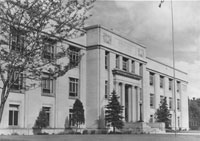Summary 2010 WY 67
Summary of Decision issued May 25, 2010
Summaries are prepared by Law Librarians and are not official statements of the Wyoming Supreme Court.
Case Name: Gomez v. State, ex rel., Wyo. Workers’ Safety & Comp. Div.
Citation: 2010 WY 67
Docket Number: S-09-0226
Appeal from the District Court of Washakie County, the Honorable Robert E. Skar, Judge.
Representing Gomez: Bill G. Hibbler of Bill G. Hibbler, PC, Cheyenne, Wyoming.
Representing State: Bruce A. Salzburg, Wyoming Attorney General; John W. Renneisen, Deputy Attorney General; James Michael Causey, Senior Assistant Attorney General; Kristen J. Hanna, Senior Assistant Attorney General.
Facts/Discussion: This is an appeal from a district court order affirming a determination by the OAH denying workers’ compensation benefits to the family of Gomez on the ground that his death was not compensable. Gomez was employed as a sheepherder along with his brother-in-law Ambrosio-Rojas by Sundown, Inc. The herders were on call 24 hours a day, 7 days a week. An argument began between the two men, in their work-provided cabin, apparently fueled by alcohol wherein Ambrosio-Rojas shot Gomez in the back, killing him instantly.
The OAH relied on language in Finley stating that an injury arises out of the employment when a causal connection exists between the injury and the conditions under which the work is required to be performed. The district court agreed there was substantial evidence in the record to support the Hearing Examiner’s findings. In prior cases denying compensation through application of the recreational or social activity exception to the definition of injury, the Court has found that the employer did not require the employee to participate in the particular activity. To find Gomez’s death compensable would require adoption of what would resemble a strict liability standard for cases where an employee is on call and on the employer’s premises. That is not the law in Wyoming where compensability requires some nexus between the work and the injury.
Conclusion: The OAH did not err as a matter of law in determining that Gomez’s death was not compensable because it did not arise out of his employment, but arose while he was engaged in recreational or social events that he was not required to attend, and where his death did not result from the performance of any task related to his job duties.
Affirmed.
C.J. Voigt delivered the decision.
Link: http://tinyurl.com/24vw52s .
[SPECIAL NOTE: This opinion uses the "Universal Citation." It was given an "official" citation when it was issued. You should use this citation whenever you cite the opinion, with a P.3d parallel citation. Please note when you look at the opinion that all of the paragraphs are numbered. When you pinpoint cite to a quote, you should cite to this paragraph number rather than to any page number. If you need assistance using the Universal Citation format, please contact the Wyoming State Law Library.]


